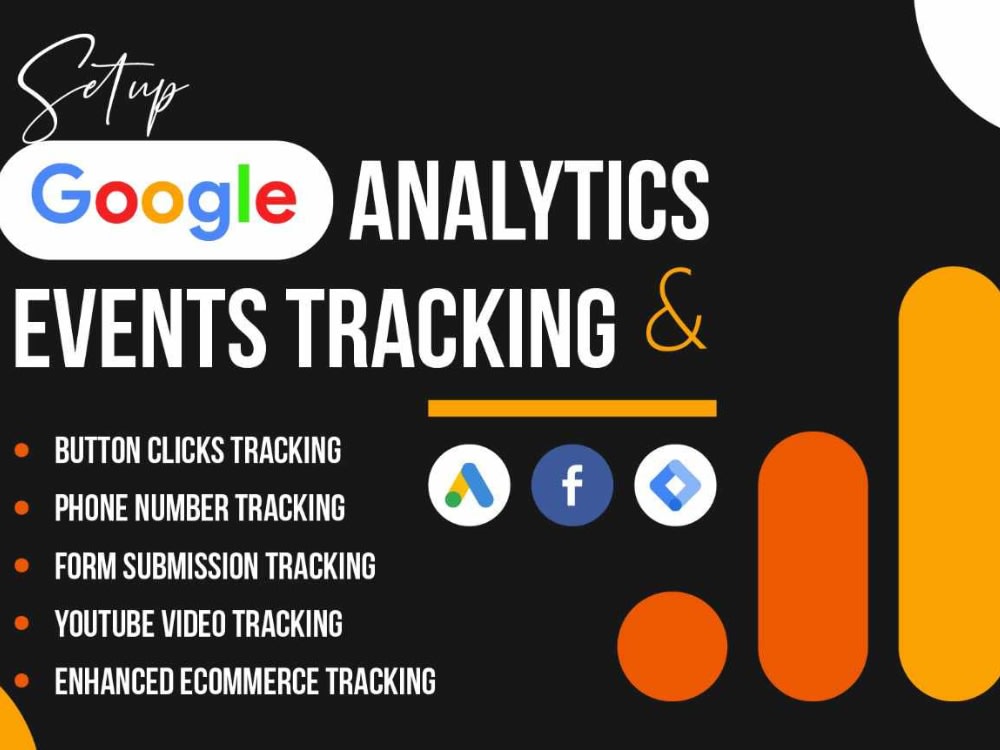Some Ideas on Google Analytics Event Tracking You Need To Know
Table of ContentsThe Only Guide to Google Analytics Event TrackingUnknown Facts About Google Analytics Event TrackingSome Known Facts About Google Analytics Event Tracking.Rumored Buzz on Google Analytics Event TrackingFascination About Google Analytics Event TrackingThe 6-Minute Rule for Google Analytics Event Tracking

If you're mosting likely to establish event monitoring manually, then you're mosting likely to need to add some additional code to the components you want to collect data from. The code you're mosting likely to collaborate with will look something similar to this: There are four parts within that code snippet that you're going to require to specify on your own: occasion, Classification, occasion, Activity, occasion, Tag and event, Value.
As you can see, two of these are needed (group and activity) while label and value are optional. Everything depends upon the kind of info you want passed on back to Google Analytics when a customer clicks on the defined aspect (Google Analytics Event Tracking). It will certainly be a lot easier to define these parts if you analyse your site and make a decision which elements/actions you intend to track
An Unbiased View of Google Analytics Event Tracking
Now, you'll be asked to define the and and you'll intend to choose from the drop-down food selection that shows up when you click on. This will certainly bring up the same event monitoring components we took a look at earlier, which you'll need to fill in. When you've specified these, you can relocate down to the 2nd box and select the trigger that will fire your tag.
On the following screen, you'll also have an area for naming your trigger and, if you click on package, you'll see a listing of the different triggers you can pick. In this situation, we intend to pick and afterwards select the alternative below. You'll establish the trigger to only discharge when a component is clicked with an URL that has the.
Basic - Occasion tracking! Occasion monitoring provides you an image of how individuals involve with your internet site and company. Review on as we check out every little thing you require to know, including what it is, why you ought to track events, just how to take care of occasions data, and other relevant Frequently asked questions you might have.
Our Google Analytics Event Tracking Diaries
You can switch in between your event categories, activities, and labels in the Top Occasions report. The Occasion Pages report displays the web pages where occasions are caused.
Occasions in Google Analytics have four main components. Google Analytics uses these codes to track individual interactions and group them right into event reports (Google Analytics Event Tracking).
A list of the criteria you can track on your website is on the. After examining all needed areas, you can click "X" to close the window and return to the Overview menu on the.
Google Analytics Event Tracking Can Be Fun For Anyone
Choosing "False" will certainly protect against that session from being a bounce. If you have not done so, you might require to establish a variable in the Google Analytics Setups box. Click "New Variable ..." if you can not locate one to pick. Hereafter, enter your GA monitoring ID in the Tracking ID field.
Your ID will certainly get on top of the screen. To do this, comply with the next series of activities: After Read Full Article setting up the fields, select the "Triggering" section. When configuring your brand-new trigger, click the "+" switch, after that the "pencil" button, then pick your trigger kind. Tag your trigger and specify the conditions that lead to cause firing.
The 4-Minute Rule for Google Analytics Event Tracking
When it familiarizes which areas and elements are assisting consumers through your conversion channel, you still will not know. So, without event tracking, GA records will just count visits as single-page sessions, even if customers invest a great deal of time on one web page and involve with it significantly (and a bounce).
But you could check here just how does event monitoring attain this?Single-web page sessions referred to as bounces start and conclude on the same page. Without occasion monitoring, GA will classify an individual's see as a bounce if they do not navigate to one more page, despite exactly how they connect with it. A video-rich web page can have a greater bounce rate if events are not tracked.
Google Analytics Event Tracking for Beginners
For GA to take event hits right into account when determining bounce prices, you should select "Non-interaction occasion" as "False" during the GTM setup. Setting "occasion goals" with occasion activity is a superb method to keep track of customer tasks you value extremely, such as new lead submissions or click a call to activity.